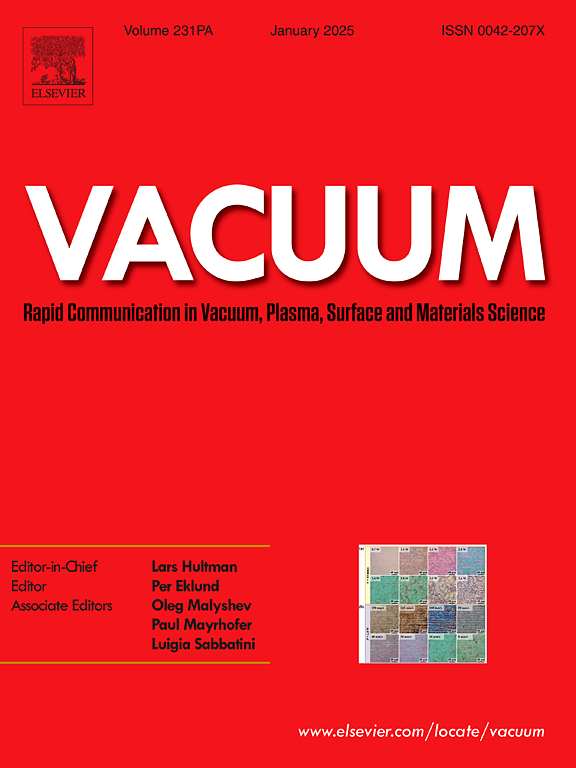Growth mode evolution and quality improvement of CVD diamond growth: role of substrate orientation
IF 3.9
2区 材料科学
Q2 MATERIALS SCIENCE, MULTIDISCIPLINARY
引用次数: 0
Abstract
The effect of misorientation angles of diamond substrate on the epitaxial diamond layer grown by microwave plasma chemical vapor deposition (MPCVD) has been investigated. The surface morphology, impurity incorporation and dislocation density of epilayer are significantly influenced by the misorientation angels of diamond substrate along to the <110>. Herein, the substrate with 3–4° miscut angles is considered to be most suitable for deposited diamond layer, which enables to grow the high-quality crystal exhibiting macroscopically flat surfaces while effectively suppressing unintentional impurity incorporation. The dominant growth mode of diamond surface undergoes from island-growth mode to two-dimensional (2D) lateral growth mode and finally to step-flow growth mode. It is also found that the morphological features of hillock defects transit from pyramidal to triangular, attributed to reduced C-species adsorption on hillock surfaces and sustained step-flow advancement. The introduction of misorientation angles changes the nucleation process and growth kinetic characteristics of hillocks. The growth rate of flat surface increases and the number of surface hillocks decreases significantly. The growth rate increases from ∼3 μm/h to ∼9 μm/h. The density of hillocks is decreased from ∼300 cm−2 to 0. Meanwhile, the average density of etching pits decreases from ∼105 cm−2 to ∼104 cm−2 with increasing off-axis angles. Based on crystal growth theory and Burton-Cabrera-Frank (BCF) theory, the relationship between the diffusion dynamics of C atoms and the misorientation angle is discussed. The substrate orientation promotes the adsorption process of C atoms at edge sites and changes the surface diffusion distance to achieve a flat surface, elucidating the underlying mechanism for angle-dependent control of surface morphological evolution.
CVD金刚石生长方式演变与质量提高:衬底取向的作用
研究了金刚石衬底取向角对微波等离子体化学气相沉积(MPCVD)外延金刚石层的影响。金刚石衬底沿<;110>;方向的取向角对涂层表面形貌、杂质掺入和位错密度有显著影响。本文认为,3-4°错切角的衬底最适合沉积金刚石层,它可以生长出具有宏观平坦表面的高质量晶体,同时有效地抑制了无意中的杂质掺入。金刚石表面的主导生长模式经历了从岛状生长模式到二维(2D)横向生长模式,最后到阶梯流生长模式。研究还发现,丘状缺陷的形态特征由金字塔型向三角形过渡,这是由于丘状表面c -物种吸附减少和持续的阶梯流推进所致。错取向角的引入改变了小丘的成核过程和生长动力学特征。平地生长速度加快,地表小丘数量显著减少。生长速率从~ 3 μm/h增加到~ 9 μm/h。丘的密度从~ 300 cm−2下降到0。同时,随着离轴角的增加,蚀刻坑的平均密度从~ 105 cm−2降低到~ 104 cm−2。基于晶体生长理论和Burton-Cabrera-Frank (BCF)理论,讨论了C原子的扩散动力学与取向角的关系。衬底取向促进了C原子在边缘位置的吸附过程,并改变了表面扩散距离以获得平坦的表面,阐明了表面形态演化的角度依赖控制的潜在机制。
本文章由计算机程序翻译,如有差异,请以英文原文为准。
求助全文
约1分钟内获得全文
求助全文
来源期刊

Vacuum
工程技术-材料科学:综合
CiteScore
6.80
自引率
17.50%
发文量
0
审稿时长
34 days
期刊介绍:
Vacuum is an international rapid publications journal with a focus on short communication. All papers are peer-reviewed, with the review process for short communication geared towards very fast turnaround times. The journal also published full research papers, thematic issues and selected papers from leading conferences.
A report in Vacuum should represent a major advance in an area that involves a controlled environment at pressures of one atmosphere or below.
The scope of the journal includes:
1. Vacuum; original developments in vacuum pumping and instrumentation, vacuum measurement, vacuum gas dynamics, gas-surface interactions, surface treatment for UHV applications and low outgassing, vacuum melting, sintering, and vacuum metrology. Technology and solutions for large-scale facilities (e.g., particle accelerators and fusion devices). New instrumentation ( e.g., detectors and electron microscopes).
2. Plasma science; advances in PVD, CVD, plasma-assisted CVD, ion sources, deposition processes and analysis.
3. Surface science; surface engineering, surface chemistry, surface analysis, crystal growth, ion-surface interactions and etching, nanometer-scale processing, surface modification.
4. Materials science; novel functional or structural materials. Metals, ceramics, and polymers. Experiments, simulations, and modelling for understanding structure-property relationships. Thin films and coatings. Nanostructures and ion implantation.
 求助内容:
求助内容: 应助结果提醒方式:
应助结果提醒方式:


